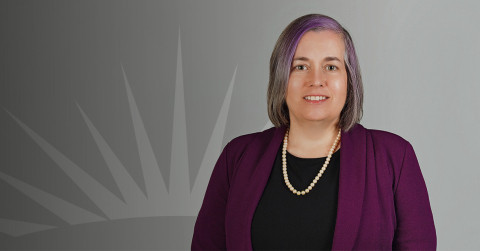
A 1970s Liability Crisis Gave Way to Risk Pool Popularity. Could a Similar Wave of Innovation Be in Store?
A second wave of innovation could prove the continued utility of public sector risk pools.
Inflation continues to drive up the price of consumer goods, from food to energy products. The Federal Reserve raised interest rates another 0.75% in November, and it is expected to raise interest rates through early 2023. Insurance markets are hardening; premium rates are increasing and coverage capacity is decreasing, especially for lines like cyber and property.
Is it any wonder, then, that people are comparing today’s economic trends to the “stagflation” experienced in the 1970s and 1980s? Back then, there was little economic growth, high inflation, a sharp rise in unemployment and a liability crisis facing the insurance industry. The Federal Reserve raised interest rates to a peak of 21% in 1981 to regain control of the economy.
“Back in the ’70s and ’80s, there was a liability crisis and certain coverages became unaffordable,” said Daniel Linton, Senior Consulting Actuary with Pinnacle Actuarial Resources. “The market was beginning to harden considerably. Inflation was significant and interest rates rose dramatically.”
The public entities sector especially struggled with the costs of needed liability coverages and workers’ compensation insurance. Schools, municipalities, cities and counties frequently found themselves unable to purchase insurance.
“Poor loss experience in the liability lines of coverage and increased costs led to insurers saying, ‘We don’t have the capacity to offer coverage anymore, and if we do, we’re going to offer it at such a price that it’s just not affordable,’ and that hurt — especially for budget-concerned insureds such as public entities,” Linton said.
Out of this liability crisis rose public entity risk pools — cooperative groups of government entities that joined together to finance their liabilities. These groups collectively self-retain primary layers of risk and, in some cases, purchase insurance and reinsurance to cover any excess.
The formation of risk pools was so successful that, in 2020, 80% of the 90,000 public entities in the United States participated in at least one risk pool, according to the Association of Governmental Risk Pools (AGRiP). Pools have created rate stability for their members and, in some circumstances, have generated significant member equity, or surplus.
As markets once again harden and certain lines become especially challenging for public entities, could a new wave of risk pool innovation be afoot?
Parallels Between the Liability Crisis and Today
Nuclear verdicts, particularly high damages awards from juries, an uptick in litigation and hardening property and cyber markets are creating a liability crisis similar to the one seen in the ’70s and ’80s.
Challenges with litigation and the rising costs associated with them have made it difficult for public entities to find coverage in traditional markets for volatile exposures such as law enforcement liability and sexual abuse and molestation (SAM) coverage.
Today’s inflationary economic environment may worsen the situation as juries increase the awards to account for higher costs.
“With high-profile cases and some of these nuclear verdicts, the risk tolerance to offer high limits on law enforcement liability has been diminished,” Linton said. “For school districts, SAM claims continue to be a big concern. Could claim frequency and severity continue to increase through the next five to 10 years? Insurers will have to ask themselves if they have the capacity to absorb that risk.”
Limits are constricting dramatically in these areas. For law enforcement liability, Linton said, “public entities used to be able to buy limits exceeding $10 million. Not only are these limits being pared back, but trends seem to be indicating that the cost to purchase these reduced limits is increasing.”
Adding to these challenges is cyber liability, a complex line for any sector given today’s climate. Public entities that may have a less sophisticated IT infrastructure and a lack of common protections like multifactor authentication can find themselves unable to purchase coverage in a hardening market. Even if they do have more sophisticated controls in place, that coverage may be unaffordable for restrictive municipal budgets.
“One would logically expect that if you don’t have the IT infrastructure to initiate multifactor authentication, it’s going to be incredibly challenging to purchase cyber liability coverage. And if you do, there’s increased scrutiny, stricter underwriting standards — with sublimits applied throughout the policy,” Linton said.
Public entities may move these risks into pools just as private companies have started forming group captives with like-minded companies to insure risks like cyber liability. “Private companies are facing the same issues, and they are using captives to address the same problems that pools are,” Linton said.
“I’ve seen more and more clients saying, ‘We need to put our cyber risk into our captive now. Commercial coverage is too expensive.’”
Risk Pools: A Source of Innovation
For lines like cyber liability, SAM and law enforcement liability, public entities can insure these exposures through their pools and lean on the wealth of risk management expertise of the pool’s other members.
“My more successful pools have been rather engaged with their members. They tend to visit them more in person, promote loss control and have incentives for improved claim experience,” Linton said.
By sharing risk management resources, pools can help members reduce their risks, keeping costs lower. Linton said one of the more successful pools he’s worked with has used some of the member equity to offer credits to members who emphasize loss control.
Still, in today’s inflationary environment, pools are likely to face some increased costs.
“I think pools need to understand that things are going to get worse before they’re going to get better. The next few years are going to be challenging. And they need to be able to communicate to their members that we are in a period of rising costs,” Linton said.
An engaged staff with the full support of the board can benefit members, however. One pool Linton works with switched from using a claims-made form to an occurrence form to give additional benefits to its members. Occurrence forms allow coverage for perils that occur over the lifetime of a policy period, regardless of when the claim is reported. Coverage on occurrence forms results in less risk to the insured of having to pay higher premiums in the future. Claims-made forms only cover incidents that are reported within the policy period. Those incidents that haven’t been reported need to be insured in subsequent years and possibly at a much higher premium. The pool then extended free tail coverage to cover any late reported claims from the expired claims-made years.
“There’s just no way you could have done that in the commercial space. Imagine approaching your insurer and saying, ‘Hey listen, I want to switch to an occurrence form, please give me my tail for free and I’ll continue to buy insurance from you,’” Linton said.
Another area where Linton has seen pools innovate is in property coverages. With risk pools, property coverage is trickier due to the increased concentration of risk in one area.
“For Colorado pools, it’s difficult to diversify away the hail risk. Likewise, for Florida pools, the means to diversify hurricane risk are limited,” Linton said.
In light of this, pools across the country are joining together to form pools of pools and diversify their property coverage. “For example, they may enter into an agreement where each pool takes a quota share higher up the property tower with other pools across the country so that they do have the opportunity to diversify away some of that concentration risk,” Linton explained.
“Many pools are leveraging favorable experience and stabilizing rates by taking advantage of healthy balance sheets that have been strengthened over years of favorable results — a product of sound underwriting practices and standards,” he added.
A Dedicated Actuarial Partner Can Fuel Pool Innovation
Actuarial consultants can help pools identify areas for innovation and provide educational resources to members as they navigate shifting macroeconomic conditions. Pinnacle Actuarial Resources has worked closely with risk pools to ensure their continued success.
“One of our pillars is empathetic customer service and really getting to understand where a board of directors is coming from, where a staff is coming from and what is their knowledge base, and educating them so that they understand the actuarial aspects of their insurance program,” Linton said.
Actuaries help pools set reserves and funding levels and evaluate their fiscal health. If an actuary’s detail-oriented eye catches excess capital, they can suggest how pools can put that capital to use to benefit members through the use of new and innovative solutions.
They can also provide educational resources to help pools prepare for shifting market conditions.
“Pinnacle’s been proactive in the educational space by offering thought leadership to our pooling clients,” Linton said. “We have monthly webinars that frequently focus on topics relevant to pools. We also had the opportunity to attend and speak at AGRiP’s spring and fall conferences — adding an element of educational value necessary for pools to thrive.”
To learn more, visit https://www.pinnacleactuaries.com/.
This article appeared in Risk & Insurance Brand Studio.




